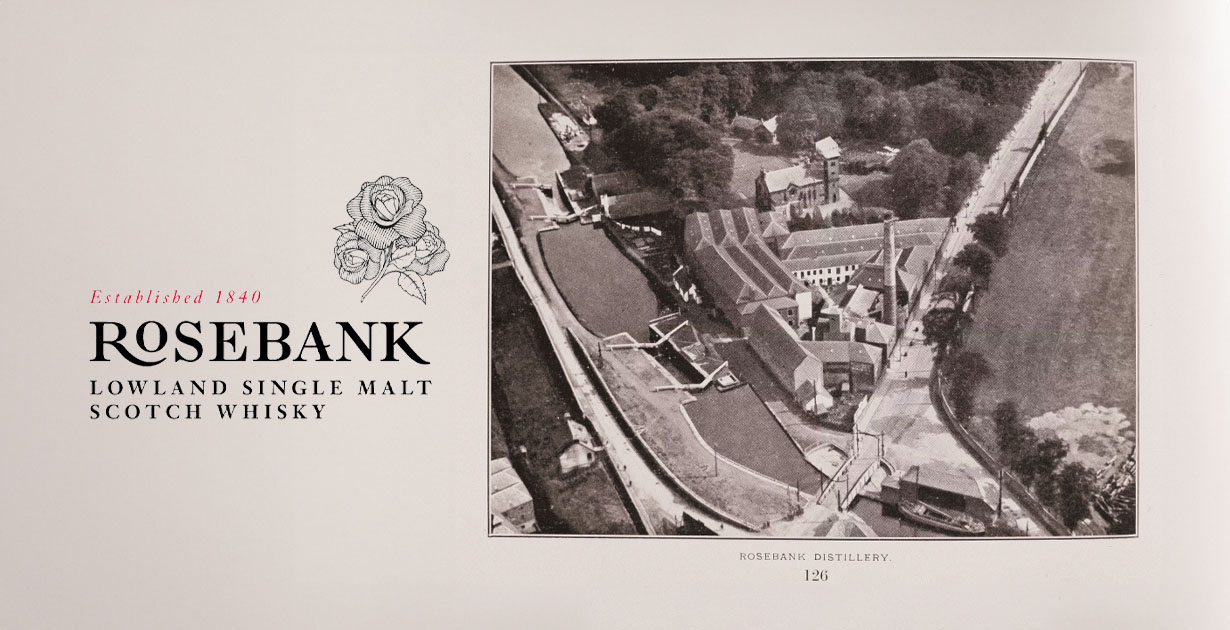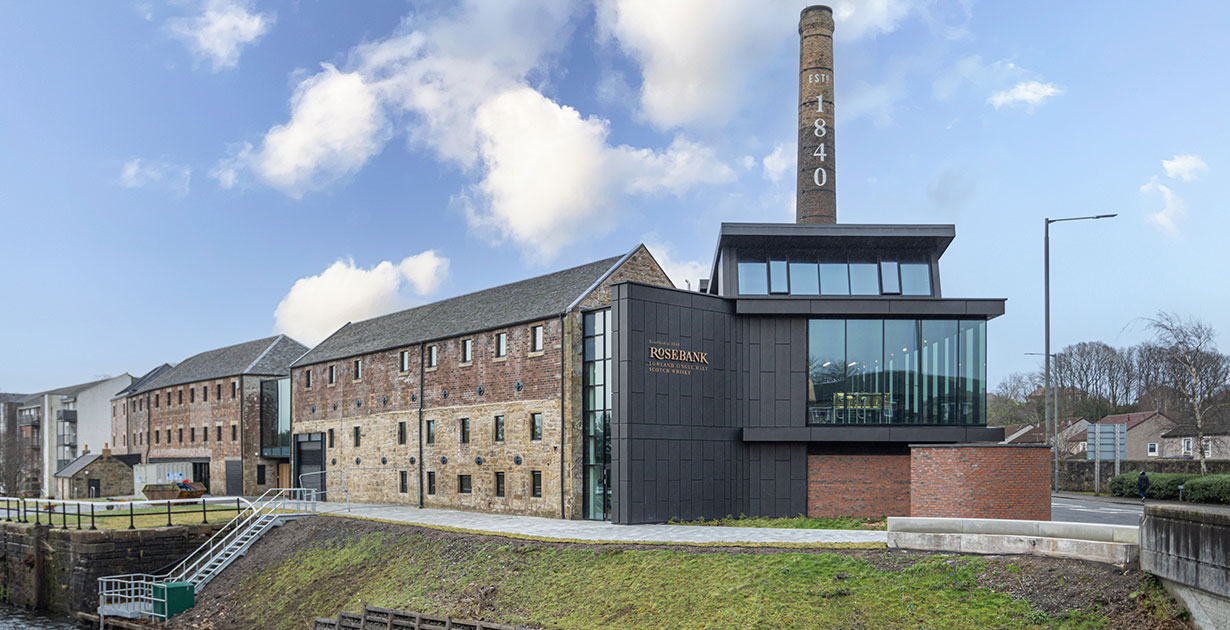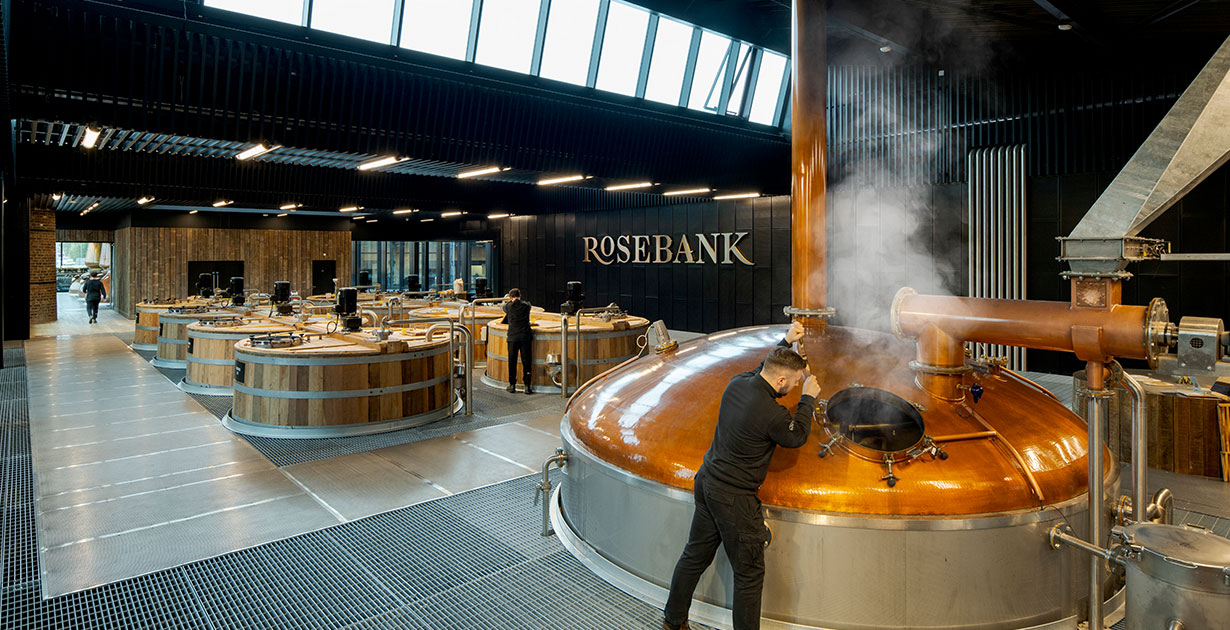
Rosebank, as soon as hailed as “The King of the Lowlands,” made a triumphant return to the world of scotch whisky after a 30-year hiatus in 2023. The distillery, recognized for its distinctive triple-distilled, worm tub-condensed spirit, additionally reopened its doorways to vacationers in 2024, a lot to the delight of whisky lovers and collectors worldwide.
This text chronicles Rosebank’s journey from its closure in 1993 to its latest revival. We’ll delve into the elements that led to the distillery’s demise, the challenges overcome in its restoration, and the thrilling new chapter that lies forward. Moreover, we’ll discover the distinctive traits of Rosebank whisky, its position within the Lowland whisky custom, and the anticipation surrounding the discharge of recent expressions from this iconic distillery. Whether or not you’re a long-time admirer of Rosebank or just curious concerning the resurgence of Lowland whisky, this exploration provides an enchanting have a look at a distillery reborn.
The Canalside Distillery – Early Years
Rosebank Distillery is located close to Falkirk in Stirlingshire, on the banks of the Forth and Clyde Canal. Constructed to hyperlink Scotland’s foremost cities, Edinburgh and Glasgow, the Forth and Clyde waterway has dictated a lot of the distillery’s historical past, from its early improvement to its fateful decline.
A distillery was first recorded in Falkirk’s Laurieston district in 1798; established by the Stark household the Laurieston distillery can be short-lived on account of water provide points. In 1817, James Robertson based the Rosebank Distillery, named for the flowers that grew on the canal banks. Rosebank’s first incarnation operated for under two years, earlier than closing in 1819.
Relocating to Falkirk’s Camelon district, John Stark resumed distilling in 1826 establishing Camelon Distillery on the western financial institution of the Forth and Clyde Canal. Stark later expanded the positioning constructing the Camelon maltings on the canal’s east financial institution and continued to function Camelon till his dying in 1837, after which Gunn & Co. took over administration of the distillery. In 1840, James Rankine, an area wine service provider, bought the Camelon maltings from Gunn & Co. and transformed the buildings to ascertain a brand new Rosebank Distillery on the canal’s east financial institution.
The distillery rapidly prospered, changing into a sought-after whisky amongst blenders, who regarded it as a ‘prime dressing’ malt, main Rankine to broaden the distillery web site in 1845. Silent from 1862-64, Rosebank was extensively rebuilt and modernized with J.W. Rankine taking up from his father when the distillery reopened.
As Camelon Distillery had closed in 1861, Rankine bought the silent west financial institution neighbor demolishing the distillery buildings to construct new maltings and warehouses for Rosebank.
In 1866 Alfred Barnard, the Victorian author and distilling historian, visited Rosebank noting the trendy distillery was set throughout two websites on both aspect of the canal with a swing bridge linking the maltings and bonded warehouses with the principle distillery. Barnard additionally recorded that Rosebank’s warehouses had storage for 500,000 gallons (1,892,705.9 liters).
Rosebank – ‘The King of the Lowlands’

In the course of the Nineties the demand for Rosebank’s malt was so excessive that gross sales had been on allocation, additionally permitting J.W. Rankine to cost the blenders warehouse lease for barrel house whereas they waited for his or her orders.
In 1894, Rosebank turned a restricted firm as Rankine established the Rosebank Distillery Firm Ltd. A founding member of the Lowland distillery conglomerate Scottish Malt Distillers (SMD) in 1914, the distillery partnered with the Clydesdale, Glenkinchie, St Magdalene, and Grange distilleries. Falling silent as a result of First World Battle between 1917-19, as Rosebank resumed manufacturing following its wartime hiatus Scottish Malt Distillers turned a part of Distillers Firm Restricted (DCL).
Within the conventional Lowland fashion, the malt was triple-distilled which produced a clean floral whisky with distinctive notes of mild citrus fruits, whereas the worm tubs gave the whisky a thick palate texture. A extremely regarded malt amongst blenders, by the twentieth century, Rosebank had turn out to be revered by whisky connoisseurs the world over and was referred to as ‘The King of the Lowlands’.
The distillery ran constantly from 1919, even remaining operational all through the Second World Battle, primarily producing malt for DCL’s blended whisky manufacturers. Confronted with a declining blended whisky market and a surplus of maturing inventory within the early Eighties Whisky Loch, DCL launched the often-forgotten Ascot Malt Cellar vary that includes a Rosebank 8 Yr Previous expression in 1982.
An ill-fated early try and enter the only malt market in competitors with The Macallan and Glenfiddich, DCL’s Ascot Malt Cellar vary included bottlings from Rosebank, Linkwood, Talisker, and Lagavulin, alongside two blended malts.
Rosebank’s Declining Fortunes
Rosebank’s decline started as roads and railways more and more changed canals as the popular strategies of business transport. The Forth and Clyde Canal closed in 1963, inflicting Rosebank’s cut up canal-side web site to turn out to be a extreme downside for deliveries and collections as highway visitors intensified. Rosebank’s No. 6 bonded warehouse on the west financial institution was offered for redevelopment in 1988, ultimately being transformed right into a Beefeater Pub and Grill.
In 1988, United Distillers (fashioned after the takeover of DCL) launched the Basic Malts of Scotland collection to enter the rising single malt market, by choosing a variety of malts to characterize every of Scotland’s whisky-producing areas. Regardless of that includes within the Ascot Malt Cellar vary, Rosebank’s destiny was sealed when Glenkinchie was as a substitute chosen because the Lowland Basic Malt.
Critics argued Rosebank outlined the Lowland fashion of whisky, though United Distillers had clear causes for selecting Glenkinchie – a whisky output 4 or 5 occasions larger than Rosebank’s capability; and a distillery located amidst 87 acres of picturesque East Lothian farmland. In distinction, Rosebank’s derelict industrial setting alongside a stagnant canal, with low manufacturing capability and utilizing uneconomical triple-distillation in contrast very unfavorably.
A 12 Yr Previous expression was launched in 1991, as United Distillers launched a brand new vary to showcase whiskies from its lesser-known distilleries whose output was usually destined just for blends. The Flora & Fauna vary was a themed collection of single malt releases every depicting the picture of an area animal or plant on the label – unsurprisingly the Rosebank bottling depicted a rose.
Regardless of this, the distillery was mothballed in June 1993, when United Distillers confronted a value of £2 million to improve the effluent remedy plant to adjust to European requirements deemed the distillery to be commercially unviable. The late whisky author Michael Jackson thought of Rosebank as “The best instance of a Lowland malt…” and regarded the closure of the distillery “…a grievous loss”.
In 2002, the Rosebank Distillery buildings and contents had been offered to the British Waterways Board, whereas the maltings and warehouses had been acquired by Westpoint Houses and subsequently demolished for a housing improvement. The probability of Rosebank reopening diminished significantly when the unique copper stills and mash tun had been stolen by steel thieves through the Christmas and New Yr vacation of 2008 – 09, leaving Rosebank seemingly destined to hitch Scotland’s misplaced distilleries.
A Rosebank Revival

Following Rosebank’s closure and sale of the distillery buildings, Diageo (successor to United Distillers) continued to launch restricted version bottlings together with a Rosebank 21 Yr Previous expression distilled in 1992, bottled as a part of Diageo’s 2014 Particular Releases. Regardless of this, Falkirk’s means of city and environmental regeneration all through the 2000s, together with the dredging and reopening of the canal, set up of the Falkirk Wheel, and building of ‘The Kelpies’ horse-head sculptures, provoked ongoing hypothesis concerning a Rosebank revival.
In October 2017, Ian Macleod Distillers concurrently introduced the acquisition of the distillery web site from Scottish Canals (successor to British Waterways), and the acquisition of the Rosebank trademark and present shares from Diageo.
Regardless of setbacks to the proposed reopening timeline as a result of COVID-19 pandemic, Ian Macleod launched a 30 Yr Previous expression designated as ‘Launch One’ as a result of it opened a brand new chapter in Rosebank’s historical past.
Distilled in 1990, ‘Launch One’ was aged in 62% refill sherry butts and 38% refill bourbon hogsheads, a restricted version of 4,350 bottles and supposed as the primary in a collection of annual particular releases till the launch of ‘new’ Rosebank spirit bottlings.
The Distillery Reopens
Rosebank Distillery lastly reopened in 2023, with the primary cask being stuffed in June of that 12 months. The spirit was distilled utilizing stills crafted from actual replicas of Rosebank’s stolen stills. The hope is that these stills will permit the group on the distillery to breed Rosebank’s well-known profile, which has been lengthy lamented by so many.
While we await the brand new whisky to mature, Rosebank has been sustaining followers on extra particular releases. These embrace:
Whisky followers can take pleasure in a top-notch whisky tour at Rosebank Distillery proper now, with an opportunity to discover how Rosebank whisky is made on the new, state-of-the-art distillery. You possibly can e-book your tour right here.



